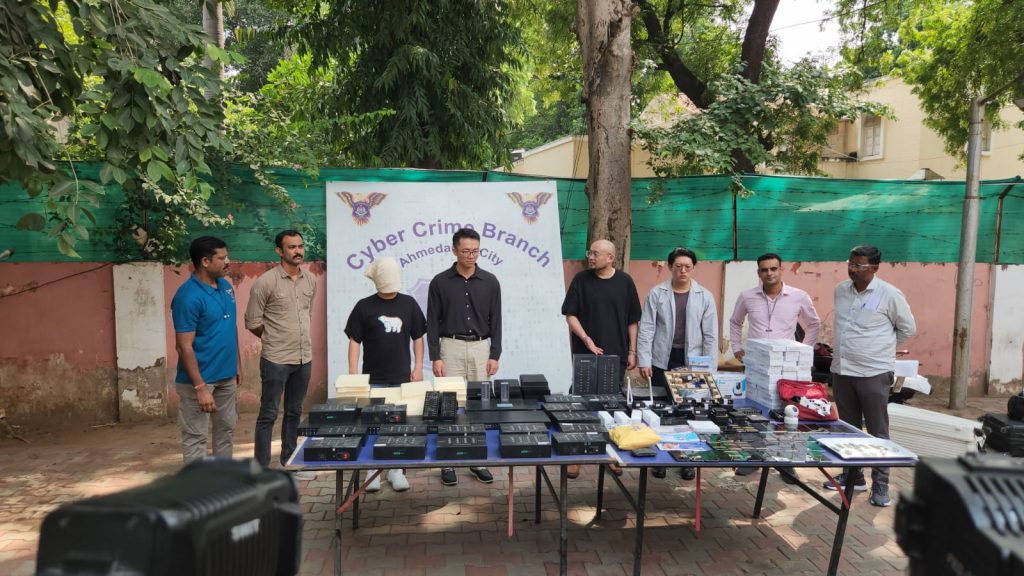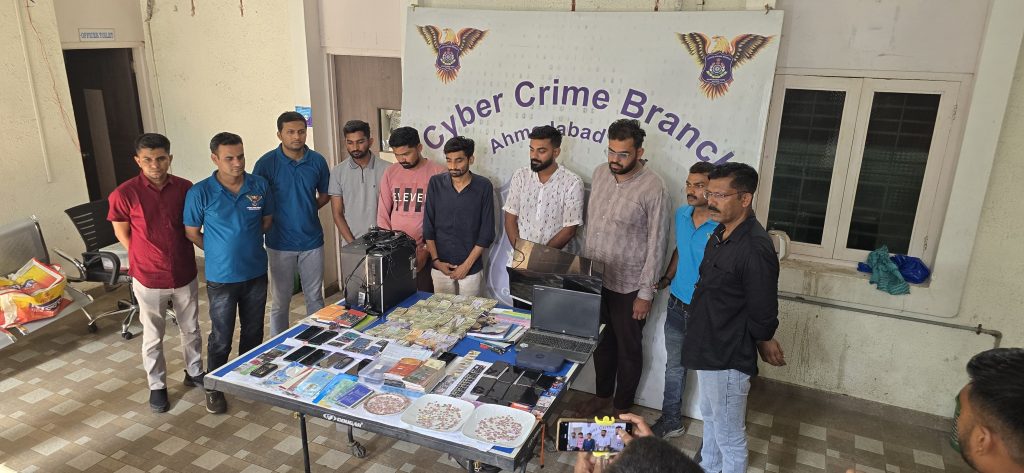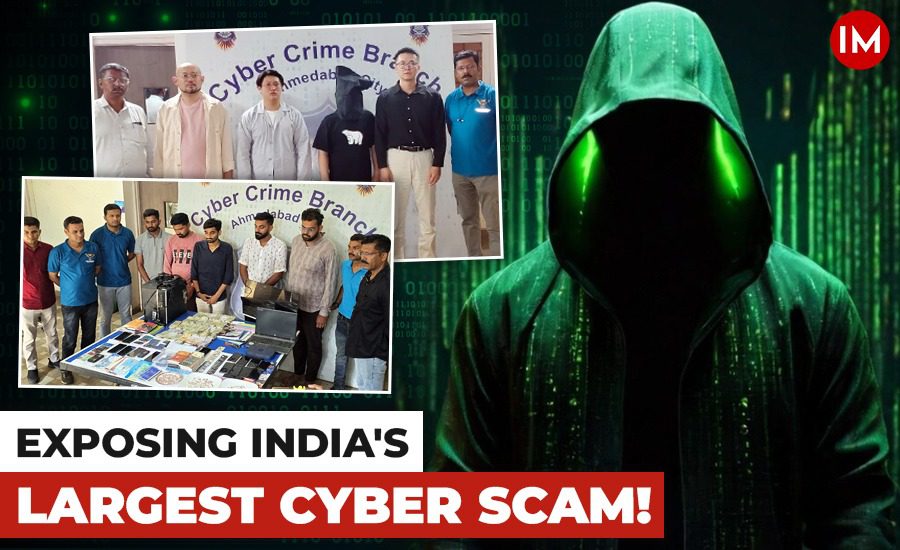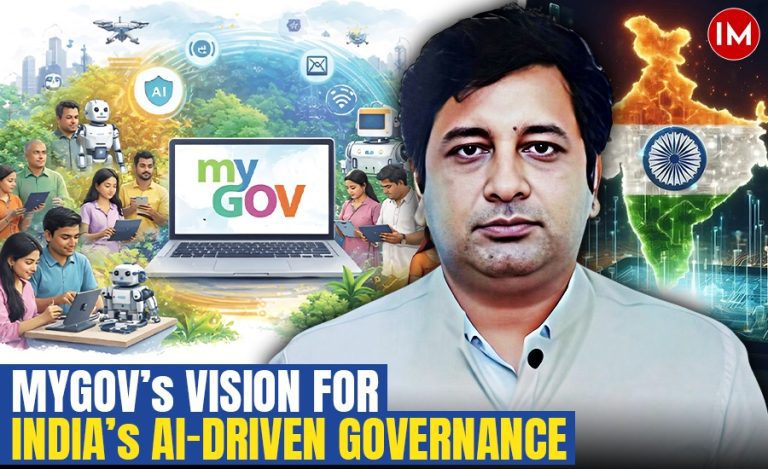It started like any other morning for IPS Lavina Sinha, the dynamic DCP of Cyber Crime in Ahmedabad, Gujarat. But on that day, a trembling senior citizen walked into her office, setting off a chain of events that would expose one of the most sophisticated and sinister cyber frauds in Indian history—a scam that had left its victims virtually imprisoned in their own homes.
In an exclusive conversation with Indian Masterminds, the officer shared details about the thrilling investigation and its results.
A CALL OF DESPERATION
The victim, a 72-year-old man, nervously sat across from Sinha. His words came in fragments—fear, shame, confusion. He had lost ₹79 lakh. But the shocking part wasn’t just the amount. He had been under ‘digital arrest’ for 13 days, held captive in his own home by faceless strangers through a relentless barrage of video calls.
“They made me believe I was under investigation by the Mumbai police. They showed me fake arrest warrants, video calls with ‘CBI officers’ in full uniform, and told me that if I didn’t comply, things would get much worse,” the man recounted, his voice shaking.
Sinha listened, her instincts kicking in. This was no ordinary cyber scam. The complexity of the deception and the emotional manipulation at play signaled something much larger.

THE ANATOMY OF A SCAM
The scam began like so many others—a phone call. The voice on the other end claimed to be from a telecom regulatory authority, accusing the man of being involved in illegal activities. Soon, the calls escalated. An “inspector” from Mumbai police appeared on a video call, complete with an official-looking backdrop. Then came a senior officer from the CBI. Warrant documents were shown to him, stamped and signed, all seeming real.
“They had gone to extreme lengths to make everything look authentic. The fake CBI officer even had a proper uniform, and the backdrop was a dead ringer for a CBI office. These criminals knew exactly how to prey on someone’s fears,” she told Indian Masterminds.
For 13 days, the elderly man was a prisoner in his own home. He was instructed to remain on video call 24/7, including while sleeping. Even routine tasks like buying groceries or stepping out for milk were prohibited, with the scammers controlling his every move. The only time he was allowed out was to withdraw money, which he obediently transferred to various accounts, each time losing more of his savings.
“THEY CONTROLLED HIS LIFE”
IPS Sinha described the chilling precision with which the fraudsters operated: “They knew exactly how to manipulate their victim. He was isolated, fearful, and constantly monitored. He was convinced that if he didn’t comply, the law would come crashing down on him.”
It wasn’t until the man saw a news report on similar digital arrest scams circulating on WhatsApp that he realized he was ensnared in one himself. By then, it was too late—₹79 lakh had vanished.
Sinha’s team registered the FIR immediately. But what started as a standard financial investigation soon revealed an intricate web of deception spanning multiple cities and even crossing international borders.

THE LAYERS UNFOLD
“We initially traced the money trail,” Sinha explained. “It led us to a series of dummy accounts—layer after layer of transactions designed to obscure the real masterminds. Every account holder we questioned led us to another one. It was a classic case of a well-oiled money-laundering machine.”
Her team made their first breakthrough when they uncovered a digital operation center in Baroda. Inside, they found a high-tech setup of rooted mobile phones, SIM cards, and ATM cards—operated remotely, not from India, but from Taiwan.
“That’s when we knew this was bigger than anything we had ever dealt with,” Sinha recalled. “This was no ordinary fraud; it was a cross-border syndicate with an astonishing level of technical sophistication.”
THE TAIWANESE CONNECTION
Further raids in Surat and Delhi revealed hundreds of SIM cards, passbooks, and banking materials. The technology was mind-boggling—mobile phones configured to run banking transactions without any human interface, controlled entirely from Taiwan.
The mastermind behind this operation? A man named Saif Haider, based in Delhi, with direct ties to Taiwanese criminals. Sinha’s team tracked his movements, gathering enough evidence to arrest him. Under interrogation, he spilled the details of a sprawling network involving multiple digital centers across India, all linked back to a shadowy group of Taiwanese nationals.
“They had created a self-sustaining system,” Sinha said. “Rooted mobile phones, automatic banking transactions, and mule accounts—everything was handled remotely. It was terrifying how smoothly it all worked.”

OPERATION: DIGITAL TAKEDOWN
The final piece of the puzzle fell into place when Sinha’s team discovered that two Taiwanese nationals—Mark and Marco—were set to land in Delhi on October 10th. These men were the brains behind the technology that made the scam possible.
“We organized a trap. We waited until they checked into their hotel, and then we moved in. It was a high-stakes operation, but we caught them red-handed,” she shared with Indian Masterminds.
Simultaneously, her team raided a digital center in Bengaluru, arresting two more Taiwanese operatives and seizing over 800 SIM cards, Dubai-based ATM cards, and more incriminating evidence.
THE AFTERMATH: A LESSON FOR ALL
The investigation is still ongoing, with Sinha’s team uncovering more layers of the scam every day. “There are many verticals to this kind of crime,” Sinha noted. “It’s not just about digital arrests. These same accounts are used for online gaming fraud, investment scams, and possibly even terror financing.”
For Sinha, the case is a reminder of the vulnerability of the digital age, especially for the elderly. “There’s no such thing as a digital arrest,” she emphasized. “The police will never arrest you over a video call. Always contact your local police station if someone makes such a claim.”
As the case unfolds, one thing is clear—IPS Lavina Sinha’s relentless pursuit of justice has not only cracked open a massive scam but also provided a wake-up call for a nation increasingly at risk from digital predators.






























